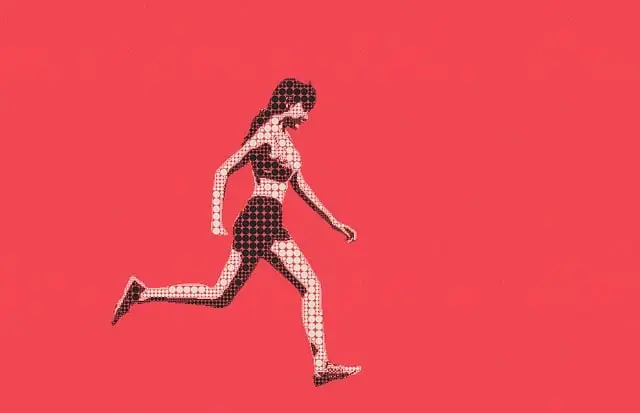Chronic pain significantly diminishes quality of life and can persist for months or years due to various causes like nerve damage, arthritis, cancer, and psychological factors, which also affect mental well-being by often co-occurring with depression and anxiety. Kratom, derived from the Mitragyna speciosa tree, is gaining attention as a potential alternative for pain management because of its compounds that may interact with opioid receptors, offering less addictive pain relief. Some individuals have found kratom beneficial, especially when other treatments are ineffective or have adverse effects. The potential for kratom to aid those with chronic pain and mood disturbances like depression is being investigated, though it's important to use it cautiously due to side effects, the need for regulation, and professional guidance to ensure safety and efficacy.
Kratom strains like Green Malay Kratom are noted for their mood-enhancing and energizing effects, which can be advantageous for depression, while Red Bali Kratom and Red Thai Kratom are praised for their analgesic properties suitable for conditions like arthritis. The concept of the "best kratom for depression" is personal, and users may need to consult healthcare providers to find a strain that works effectively for them within a treatment regimen. It's essential to use kratom judiciously, adhering to dosage guidelines, considering individual health conditions, and being aware of potential interactions with other substances. The scientific community advocates for further clinical research on kratom's efficacy and safety for managing chronic pain and depression, emphasizing responsible use and caution. Regular monitoring of both mental and physical health is recommended to ensure safe and effective use of kratom for pain and mood management.
Chronic pain and depression can significantly hinder one’s quality of life, often necessitating comprehensive management strategies. This article delves into the multifaceted approach of integrating kratom into pain management plans, particularly emphasizing its potential for alleviating symptoms associated with depression alongside chronic pain. We will explore the science behind kratom’s effects, identify the most effective strains for pain relief, and discuss the safety considerations necessary for responsible use. Whether you’re a patient or a curious reader, understanding how kratom can be part of your health regimen is crucial for navigating the complexities of chronic pain and depression management.
- Understanding Chronic Pain and the Role of Kratom in Management
- Exploring the Best Kratom Strains for Depression and Pain Relief
- Safety Considerations and Responsible Use of Kratom for Pain and Depression
Understanding Chronic Pain and the Role of Kratom in Management
Chronic pain is a persistent and often debilitating condition that can significantly impair an individual’s quality of life. It encompasses a range of conditions where pain persists past the typical healing time, sometimes for months or even years. This type of pain can arise from various sources, including nerve damage, arthritis, cancer, and psychogenic factors. The impact of chronic pain is multifaceted, affecting not just physical health but also mental well-being, as it often co-occurs with conditions like depression and anxiety.
In recent years, kratom has emerged as a subject of interest in the context of managing chronic pain. Mitragyna speciosa, commonly known as kratom, is a tropical evergreen tree native to Southeast Asia. Its leaves have been traditionally used by locals for their stimulating and sedative effects. The active compounds found in kratom, such as 7-hydroxymitragynine and mitraphylline, are believed to interact with the body’s opioid receptors, providing pain relief similar to opioids but without the high potential for addiction and dependency. While kratom is not a panacea for chronic pain, it has been reported by some individuals as being beneficial, particularly when traditional treatments fall short or come with adverse effects. The best kratom for depression might also offer an added advantage for those who experience mood disturbances associated with their chronic pain conditions. It’s important to approach the use of kratom with caution, as it is not without side effects and regulatory considerations. Users should consult healthcare professionals before incorporating kratom into their pain management regimen to ensure safe and effective use.
Exploring the Best Kratom Strains for Depression and Pain Relief
When seeking natural remedies for depression and pain relief, kratom emerges as a potential option due to its complex alkaloid profile. Among the myriad strains of kratom, some are particularly favored for their uplifting and analgesic properties. For those experiencing the shadow of depression, strains like Green Malay Kratom are often recommended; they are celebrated for their balancing effects on mood without the sedative side effects that can accompany other strains. This particular strain is said to provide a sense of well-being and energy enhancement, which can be beneficial for individuals dealing with depressive symptoms. On the flip side, those in pursuit of pain relief might explore the potent analgesic qualities of Red Bali Kratom or the similarly effective Red Thai Kratom. These strains are known to offer profound painkilling effects, making them suitable for chronic pain conditions such as arthritis or musculoskeletal disorders. It’s important to approach kratom with caution, adhering to responsible dosage guidelines and considering professional advice to avoid any negative interactions with medications or personal health conditions. As with any holistic approach to well-being, the best kratom for depression will vary from person to person, and it may require some experimentation under the guidance of a healthcare provider to find the most effective strain for individual needs. Always prioritize informed decision-making and consult with medical professionals when integrating kratom into a treatment plan for depression or chronic pain.
Safety Considerations and Responsible Use of Kratom for Pain and Depression
When considering kratom for chronic pain and depression management, safety and responsible use are paramount. Kratom, derived from the leaves of Mitragyna speciosa, has been traditionally used in certain cultures for its mood-enhancing and analgesic properties. However, it’s crucial to approach its use with caution due to its potential for both therapeutic effects and adverse reactions. The best kratom strains for depression are often those that have a balanced alkaloid profile, which may help in modulating mood without the sedating or euphoric effects associated with higher doses. Strains such as Maeng Da, Borneo, and Bali are frequently cited among users seeking relief from depressive symptoms. It’s important to note that while some individuals report positive outcomes, the efficacy and safety of kratom for these conditions require more robust clinical research.
Responsible use of kratom involves careful dosing, duration of use, and an understanding of its interactions with other substances. Users should start with low doses to gauge effects before considering higher doses for pain relief or mood enhancement. Additionally, long-term use should be approached with awareness of potential side effects and the risk of developing dependency or tolerance. It’s advisable to consult with a healthcare provider before integrating kratom into one’s regimen, especially if other medications are being taken. Monitoring one’s mental and physical health status regularly is also a responsible practice when using kratom for pain and depression management.
When addressing chronic pain and its comorbidity with depression, exploring effective management strategies is paramount. This article has delved into the role of kratom in providing relief for those suffering from these conditions, highlighting the best kratom strains for depression and pain relief. It is crucial to approach the use of kratom with caution, as safety considerations are essential for its responsible use. For individuals considering kratom as part of their wellness regimen, understanding the nuances of strain selection and potential interactions is key. As such, this guidance aims to inform and empower those navigating the complexities of chronic pain and depression management, with a focus on the best kratom for depression. It is always advisable to consult with healthcare professionals when integrating any new treatment into one’s health regimen.






